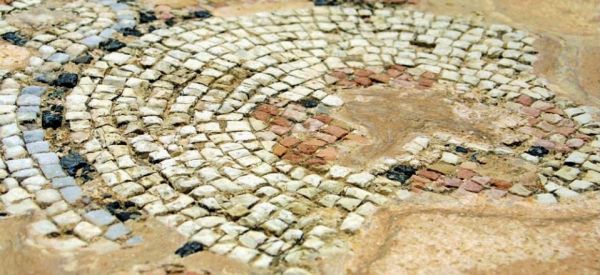Kefalonia's position on the sea routes to and from the West made it necessary for Rome to expand West. The island ties its fate to the Roman Empire around 190 BC. After the Roman conquest, the 4 city states of the island (Krani, Sami, Pali and Pronnoi) lose their independence and experience an initial period of economic and social decline. The population moves from the hinterland towards the coast and the settlements develop outside the old city walls. Sami, thanks to its deep and sheltered bay where commercial ships can find a safe mooring, becomes the main city of the island and is embellished with imposing buildings, spas, port infrastructures. The same expansion involves, albeit to a lesser extent, all the city-states and new settlements arise in Katelios and Fiskardo. Numerous artefacts from the time can still be found today in Skala, Agia Efimia, Sami and Vatsa on the Paliki peninsula.
Panormos is the name of the village founded where Fiskardo is today. The monuments discovered so far demonstrate that the city was structured and developed like the other prosperous coastal cities of the time. Given its centrality in the Ionian, it certainly represented an important maritime station. Where the agora once stood, an oil tank and a warehouse with large amphorae have been found. A thermal complex was found in the bay of Saint Andreas, near the necropolis, which can still be visited today. The Roman cemetery of Fiskardo was discovered in 2006 during excavations for a new building. In the numerous tombs of the site, excellently preserved, ceramics, bronzes, jewels, finely decorated sarcophagi, coins to accompany the deceased to the world of the dead, food residues and table vases used for funeral dinners were found. The mausoleum in Tigania is the most impressive because it was found almost intact and with rich equipment. On the wall opposite the entrance there are two niches, where the busts depicting the two buried people probably were. The room is occupied by a tomb with an arched roof and a house-like facade. Inside, a stone sarcophagus was found. Near the mausoleum there was a theatre with an orchestra, seats and a niche. An even more extensive necropolis once stood in the splendid bay of Saint Andreas. Some of the graves were familiar, as deduced from the skeletal remains.
The Roman villa of Skala dates back to the 2nd century AD and is located a short distance from the sea. The site was discovered by chance in 1944 by the owner of the land and archaeological excavations began in 1957. Probably belonging to a wealthy Roman landowner, the villa is made up of six rooms which still feature colourful mosaic floors. The choice of subjects portrayed in the decorations is curious: one of the mosaics depicts Envy being torn apart by 4 wild beasts, perhaps to avert the jealousy of visitors in front of the wealth of the house. A second mosaic instead represents an animal sacrifice to indicate the importance of religion and nature for the owners of the farm. A fire is supposed to have destroyed the villa in the 4th century AD. and that on the ruins, a few centuries later, a Christian church was built which remained in operation until the 9th or 10th century.

